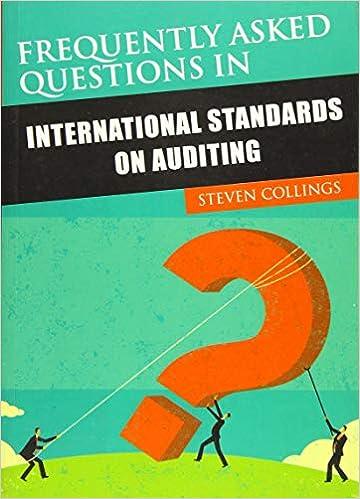please help me answer the question below, calculations are required. just give the final answer

please help me answer the questions below. calculations are not required
A firm operates a process in which no losses are incurred. At the beginning of the period the opening work-in-progress was 2 500 units, which were 100 per cent complete in respect of materials, and 60 per cent complete in respect of labour and overheads. During the period, 6 500 units were completed At the end of the period the closing work-in-progress was 1 500 units which were 100 per cent complete in respect of materials, and 60 per cent complete in respect of conversion. The firm uses the weighted average method for valuing the output from the process Calculate the number of equivalents units completed in respect of labour and overheads Caleb Ltd produces one product. The company inputs 3,000 units of material into the process, valued at N$20/ unit. Total conversion cost incurred in the process is NS150,000, with 60% allocated to labour cost. The company expects to lose 6% of inputs from the process and sells all damaged units at N$25/unit Caleb produced 2,700 units of finished goods, which were all sold in the same period at a total profit of N$30,000 Calculate the cost of finished goods sold Amhal In May 2021, Green & co produced 2,000 units at a cost of N$3/unit and sold 1,500 units at N$5.00/ unit. From the production process, the company produced 500 units of by-product that need to be processed further at a cost of N$0.50/unit before they were sold for N$2.50/unit. Green & co has the option of allocating the net sales of the by-product to the joint cost or to cost of goods sold Calculate the difference in gross profit between the 2 options on Helao Ltd uses a process costing system. During the month they input 1 500 units of total manufacturing costs of N$67,500. The company has estimated a normal loss 10% from the process Calculate the value of finished goods manufactured during the period Himalaya cc produces 2 products from the same process - Product AB and AC. The joint cost allocated to the 2 products are N$15,000 and N$12,000, respectively. 10,000 units are produced for product AB, and the company produces 8,000 units of product AC, which are processed further for N$25,000 and N$20,000 respectively before they are all sold for N$5 per unit Calculate the gross profit % of Himalaya cc Globes Rus manufactures three products, X Y and Z. The company has been absorbing overheads traditionally based on production volume and is trying to move towards activity based costing Selling prices are then determined using cost plus 20% pricing. The following is the direct cost information per unit of production Product Y Z Total direct cost per unit 66 80 58 Production volume 25,000 20.000 30.000 Batch size 500 1,000 600 Number of orders per batch 3 6 5 Machine hours per unit 2 015 Actual overheads were incurred as follows Cost Pools NS Cost Drivers Machine set up Costs 200,000 Number of batches Material ordering costs Number of purchase 250,000 orders lachine running 300,000 Machine hours costs Total cost 765,000 Calculate the sales price per unit of product Y using Globes R Us current method of absorption costing














